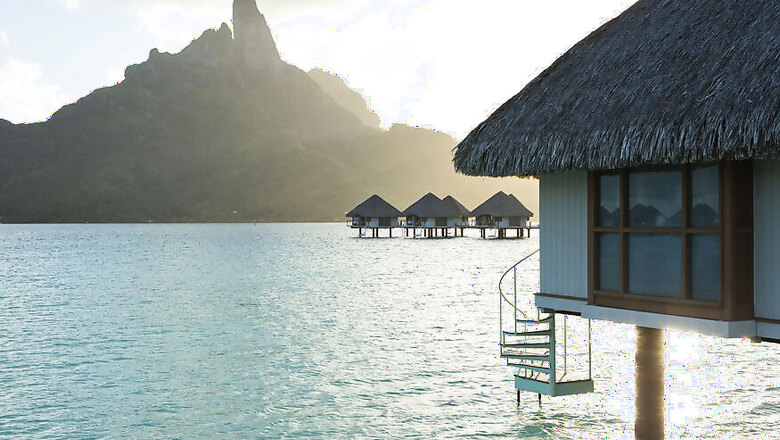
views
Overwater bungalows -- one of the ultimate symbols of dream vacations in paradise locations -- first saw the light of day 50 years ago in Tahiti, creating a new luxury concept in the world of hotel accommodation.
While these thatch-roof houses are inspired by Polynesian tradition, it was, in fact, a trio of Americans who turned the overwater bungalow into an accommodation concept, which became an institution in the tourism world.
This iconic accommodation, which lets guests admire marine life without even leaving their suite, was made popular by three Californians who teamed up on a hotel project in French Polynesia in 1967. They first set up in Moorea -- one of the Tahiti's most famous islands -- before opening in Raiatea which has no sandy beach. One of the three friends had the crazy idea of creating accommodation raised over the water on stilts and with glass flooring. Three such bungalows were first built in Raiatea. Bungalows then followed in Moorea and Bora Bora.
Originally, this type of accommodation was inspired by traditional Polynesian homes called "fare." Earth or sand floors were paved with volcanic rocks or coral and bamboo canes were used to build walls.
Today, 884 overwater bungalows await lucky visitors to Tahiti and its islands. In fact, 22 hotels offer this kind of accommodation on seven islands, including major hotel brands such as Intercontinental, Le Méridien and Sofitel.
These famous lodgings, which are notably popular with newlyweds, have inspired overwater accommodation in other global destinations, such as the Maldives and Mauritius.




















Comments
0 comment